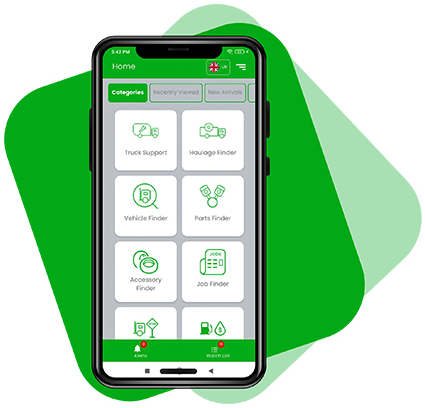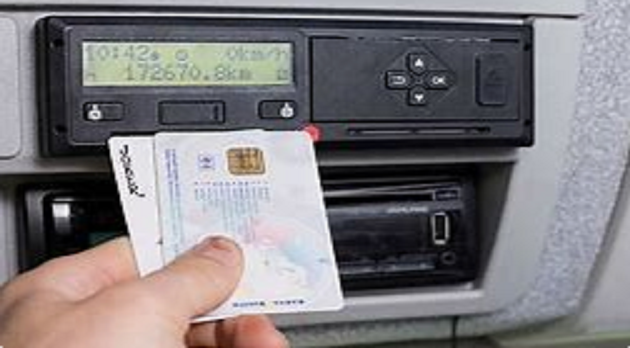Driving without a tachograph card: is strictly prohibited. When it comes to driving an HGV, it is one of the most basic ways to break the rules and get yourself into trouble. Drivers forgetting their tacho cards, on the other hand, happens far more frequently than it should. In fact, over £1.5 million in fines were issued to UK drivers between 2016 and 2017 for card offences while driving and exceeding driving hour times. Some drivers were even imprisoned.
Any violation of a driving rule will be taken very seriously. However, because the rules governing driving without a tachograph card are among the most fundamental, it’s critical to stay on the right side of the law.
Regulation (EC) 561
Hauliers have been required to track their driving for some time, with Regulation (EC) 561 entering into force in 2006, requiring all relevant vehicles (produced after 2006) to be equipped with a digital tachograph system. This means that any authorities stopping drivers for information should be able to easily access their speed, driving, and rest hours to ensure that they are following the law.
For the time being, we will only look at driver cards (excluding company cards, control cards, and workshop cards), and we will discuss the do’s and don’ts of using your driver card. Let’s start with the rules governing your driver tacho card.
Rules when using a tacho card
- When using your vehicle, you must always use a card. If your card is lost or stolen, you must take a printout at the beginning and end of each shift. Be aware that the VU will still record that no card was present and will continue to record all activities that could be considered “undeclared duty.”
- One smart card for each driver – One of the most important tachograph rules is that your smart card cannot be shared with other drivers.
- The DVLA must have your current and correct contact information. If any information changes (such as your address), you must notify them as soon as possible.
- Cards should be in the correct slot as soon as you enter the vehicle and certainly before you begin driving, with driver 1’s card in slot 1 and driver 2’s card in slot 2 where applicable. Remove the card during the working day only if there is a change in vehicle or driver.
What can a tacho card track?
When in use, each card can track specific information about the various vehicles it has been used in, including a timestamp and date, as well as the registration number and odometer readings of each vehicle. It can track the distance travelled, the activity states of the driver throughout the journey (whether driving or taking a break), and the activities of any co-drivers. Driving without a Tachograph Card
In fact, each tacho card stores multiple layers of data, ranging from the countries visited to the driver’s profile. It also stores information about the authority (typically an EU country) that issued it, the various locations and times when it can be used, as well as the driver’s name, DOB, and driving licence number.
The primary function of the tacho card is to keep track of the vehicle’s and the driver’s activity and information. This means that anything of importance can be accessed and questioned at any time. As previously stated, much of the information must be recorded because the rules and laws governing them are stringent and can subject both the company and the driver to prosecution if they are not followed. Most HGVs can be operated without a card; however, this is strictly prohibited (except in very limited circumstances), and driving without a tachograph card will result in your vehicle recording any times it is used without a card.
When is it okay to drive without a tacho card?
Only the most unusual circumstances allow a driver to drive without a tachograph card. The main and essentially only reason is that your card is completely irretrievable, whether due to theft, loss, or damage. If you misplaced or left your card at home, you must retrieve it before you can drive. Only those who have no other way of driving will be permitted to do so unless their card is replaced. The following are the steps that must be taken when driving without a tachograph card:
- Inform the DVLA immediately. If your card is lost, stolen, or irreparably damaged, you must notify the DVLA (or DVLNI, if applicable) as soon as possible during their open hours.
- Alternatively, if your card has expired, you will need to wait until a replacement card is sent out and ready for use before you can drive again. There are no exceptions to this rule; you must always have an up-to-date card.
- Inform your boss as soon as possible. They must know if your ability to work has been jeopardised or ceased, and you must also notify anyone else who your superior requires you to.
- Driving without a tachograph card is possible, as previously stated, but the situation comes with its own set of rules. You are permitted to drive; however, you may only do so for a period of up to 15 calendar days. Because the DVLA is required to replace any cards within 5 working days, this shouldn’t be too difficult to accomplish, and it applies only to those who have lost or damaged their tacho card.
- When working without your card, you must make a hard copy printout from your digital tachograph at the start and end of each journey. You must also write your name and DL number on the back of each printout so that they can be easily traced back to you.
- These printouts must be ready and available for inspection for up to 28 calendar days before being handed over to the vehicle operator.
- Apply for a new card right away, which will cost £19 (unless you are replacing a faulty card) and will take 5 working days to arrive. The sooner you order it, the better.
If you have any questions about driving without a tachograph card, or if you simply have a question related to HGV’s and Driving, please contact our friendly team, who will be happy to assist you.


 Download our New App
Download our New App

